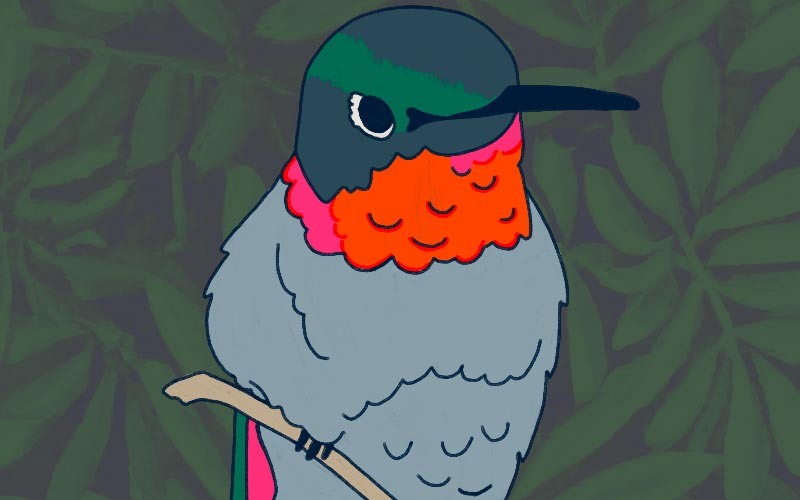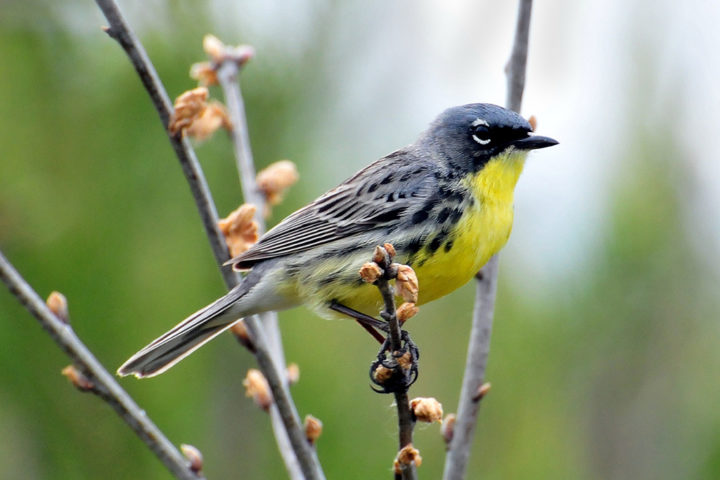Pollinators After Dark
June 23, 2023
When we think of pollinators, our minds often conjure images of bees, butterflies, and birds flitting about during the daytime. However, there is a hidden world of lesser-known pollinators that emerges as twilight descends upon the Appalachian Trail (A.T.). Though less visible to most Trail visitors, these creatures play a vital role in the ecosystem by ensuring the survival of numerous plant species. In this blog post, we will shine a light on five fascinating species that feed during twilight or nighttime hours: the Hummingbird Clearwing Moth, White-lined Sphinx Moth, Pandora Sphinx Moth, Lightning Bug, and Ruby-throated Hummingbird.
For each species, we’ve also included a free, downloadable coloring page, so you can celebrate the Trail’s pollinators with some relaxing and meditative coloring!

Hummingbird Clearwing Moth (Hemaris thysbe)
Resembling a tiny hummingbird, the hummingbird clearwing moth is a master of twilight pollination. With its rapid wingbeats and long proboscis (that’s its long feeding tube), it hovers over flowers, sipping nectar while simultaneously transferring pollen. Found along the A.T., these moths are particularly attracted to bee balm, honeysuckle, and phlox. They are a delightful sight, combining the grace of a hummingbird with the intricate beauty of a moth.

White-lined Sphinx Moth (Hyles lineata)
The white-lined sphinx moth, a striking creature with its distinctive white lines, emerges at dusk to seek out sweet-scented flowers, including evening primrose, honeysuckle, and moonflower. These moths also possess a long proboscis, which they use to extract nectar from tubular flowers. As they flit from one blossom to another, they inadvertently transfer pollen, aiding in the process of plant reproduction.

Pandora Sphinx Moth (Eumorpha pandorus)
The pandora sphinx moth is a true twilight specialist. With its large, intricately patterned wings, it is an eye-catching presence along the Trail. These moths prefer to feed on flowers like honeysuckle and phlox. In their quest for nectar, they pollinate these plants, contributing to the delicate balance of the ecosystem.

Lightning Bug (Photinus spp.)
Many people know that fireflies are one of the most famous summer twilight sights along parts of the Trail but may be surprised to learn that the adults of most firefly species are pollinators! With diets consisting primarily of pollen and nectar, fireflies play an important role in the propagation of many flowering plants. Their larvae are equally helpful, eating invertebrate pests like snails, slugs, worms and grubs.

Ruby-throated Hummingbird (Archilochus colubris)
While the Ruby-throated Hummingbird is known to most, its twilight feeding habits often go unnoticed. These pint-sized wonders embark on migratory journeys along the Appalachian Trail, arriving in the evenings to sip nectar from trumpet-shaped flowers such as coral honeysuckle and cardinal flower. As they probe deep into the flowers, their foreheads become dusted with pollen, making them very effective pollinators.
The A.T. corridor is home to an extraordinary array of lesser-known pollinators that thrive during twilight or nighttime hours. These species contribute to the rich biodiversity of the region and help their ecosystems thrive. By spreading awareness about their important role in pollination, we can appreciate and protect these twilight heroes, ensuring the preservation of the Appalachian Trail’s natural beauty for generations to come.
Discover More

The A.T. Landscape Partnership
A Dynamic Approach to Landscape Conservation
The Appalachian Trail Landscape Partnership is a dedicated coalition of local, state and federal partners led by the Appalachian Trail Conservancy and the National Park Service.

By Marina Ritchie
Wild Skyway
Wherever you are on the Appalachian Trail, birds offer sweet companionship. Yet, as hiker numbers soar, bird populations tumble.

Official Blog
The Pathway from Recreation to Conservation
Through our actions on the Appalachian Trail and beyond, we can help conserve a precious natural resource and inspire others to do the same.
